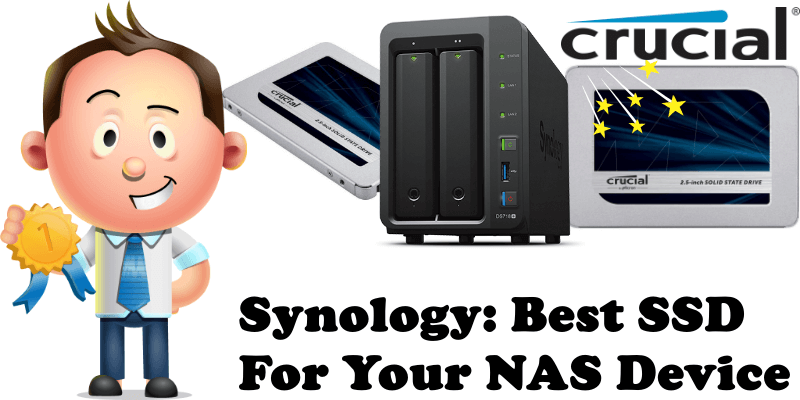
If you want to improve the performance of your Synology NAS, you will be confronted with a hard choice: the choice of memory drive. Hard drives still have great utility, especially in NAS environments. However, they cannot compete with solid state drives (SSDs) in terms of reliability and speed of writing and reading. SSDs offer unparalleled performance compared to any HDD. With this in mind, a very interesting example is undoubtedly that of the new Crucial MX500 that I am currently using on my Synology NAS to keep my website “mariushosting.com” running smoothly.
The Crucial MX500 is sold in two different form factors, each with different capacities:
- 2.5 inches: 250 GB, 500 GB, 1 TB and 2 TB capacity;
- M.2 2280: has a capacity of 250 GB, 500 GB and 1 TB.
Crucial has adopted memories that take advantage of a new generation 256 Gbit die. In fact, the new die – that is, the thin plate that acts as a semiconductor in integrated circuits – has physical dimensions 30% smaller than the first generation. It may seem like a bit of an innovation, yet this little novelty has made it possible to get more die for each integrated circuit and therefore reduce costs. In short, it is a technological advancement that improves the functioning of an SSD and, at the same time, lowers its costs. If you think about it, this is the task that every new technology finds itself fulfilling.

The reading and writing speed for data storage is in line with the high-end SSDs. The MX500 writing speed reaches 512 MB/s. The MX500 reading speed reaches 560 MB/s. But what really surprises me is the relative value of IOPS. IOPS is an acronym that stands for Input / Output Operations per Second and, as you may have guessed, indicates the real speed of the SSD by measuring the impact on the experience of use. In casual reading, the Crucial MX500 exceeds 9000 and almost reaches 10,000 IOPS. It is an extraordinary leap compared to the 7000 IOPS of the old Crucial MX300. Thanks to such values, the new product of the American company reaches impressive responsiveness.
The hardware of the new Crucial SSDs is accompanied by a remarkable set of features that essentially aim to optimize the performance of the MX500. Here are the main features:
- SED and FDE. These are self-encrypting drives and full disk encryption, two technologies that manage drive encryption. SED and FDE always operate in the background, but you will need to enable the ATA Security command from the BIOS system to get the best advantages.
- DWA, aka the data write acceleration. It is a very interesting feature for what you can do. In practice, the MX500 uses an SLC (single level cell) buffer to increase the performance of NLC TLC memories. Crucial uses a dynamic buffer that decreases or increases depending on the data stored on the memory.
- Momentum Cache. This feature uses a small amount of memory as if it were the system cache. In this way, before reaching the SSD, the data is sequenced in the cache, which results in increasing performance.

Personally, I use the Crucial MX500 250 GB on my DS718+ Synology NAS, which brings with it the best of the latest technologies, backed up by excellent software support and a 5-year warranty. Both its competitive price and speed has caused the Crucial MX500 SSD to shake the SSD market. As you can see here, mariushosting.com is faster than Google, and the Crucial MX500 is a part of this success. If you use your Synology NAS for hosting a WordPress website from home, my recommendation is to buy two Crucial MX500 500GB or 250GB disks and put them in RAID 1. If you want to enjoy your Synology NAS at the top of its performance, choose Crucial. I’ve tried other SSD brands on my Synology NAS, but I got the best results with Crucial MX500.
This post was updated on Friday / December 6th, 2019 at 8:38 PM
